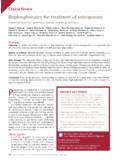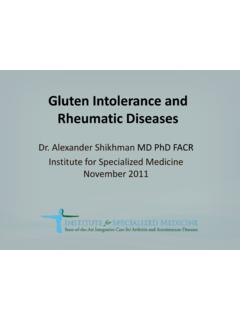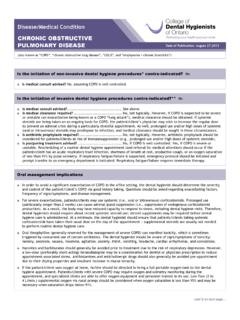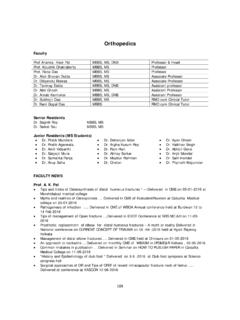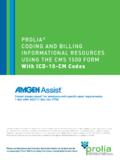Transcription of New Zealand Data Sheet - Medsafe
1 New Zealand data Sheet ACLASTA zoledronic acid 5 mg/100 mL solution for infusion DESCRIPTION AND COMPOSITION Pharmaceutical Form(s) Solution for infusion. The solution is sterile, clear and colourless. Active Substance(s) One bottle with 100 mL solution contains 5 mg zoledronic acid (anhydrous), corresponding to mg zoledronic acid monohydrate. Active Moiety Zoledronic acid (anhydrous). Excipients Mannitol, sodium citrate, water for injections. INDICATIONS Treatment of osteoporosis in postmenopausal women to reduce the incidence of hip, vertebral and non-vertebral fractures and to increase bone mineral density.
2 Treatment of osteoporosis in men. Treatment of Paget s disease of bone. Treatment and prevention of glucocorticoid-induced osteoporosis . Prevention of clinical fractures in patients after hip fracture. Prevention of postmenopausal osteoporosis . DOSAGE AND ADMINISTRATION General The incidence of post-dose symptoms occurring within the first three days after administration of Aclasta can be reduced with the administration of paracetamol or ibuprofen shortly following Aclasta administration. Patients must be appropriately hydrated prior to administration of Aclasta.
3 This is especially important in the elderly and for patients receiving diuretic therapy (see Warnings and Precautions). Treatment of Postmenopausal osteoporosis For the treatment of postmenopausal osteoporosis , the recommended dose is a single intravenous infusion of 5 mg infusion of Aclasta administered once a year. Adequate supplemental calcium and vitamin D intake is important in women with osteoporosis if dietary intake is inadequate (see Warnings and Precautions). Prevention of Clinical Fractures after a Hip Fracture For the prevention of clinical fractures after a low-trauma hip fracture, the recommended dose is a single intravenous infusion of 5 mg Aclasta administered once a year.
4 In patients with a recent low-trauma hip fracture, it is recommended to give the first Aclasta infusion two or more weeks after hip fracture repair. In patients with a recent low-trauma hip fracture, a loading dose of 50,000 to 125,000 IU of vitamin D given orally or via the intramuscular route is recommended prior to the first Aclasta infusion (see Pharmacodynamic properties). Supplemental calcium and vitamin D intake is recommended for patients treated to prevent clinical fractures after a low-trauma hip fracture (see Warnings and Precautions). Treatment of osteoporosis in Men For the treatment of osteoporosis in men, the recommended dose is a single intravenous infusion of 5 mg Aclasta administered once a year.
5 Adequate supplemental calcium and vitamin D intake is important in men with osteoporosis if dietary intake is inadequate (see Warnings and Precautions). Treatment and Prevention of Glucocorticoid-induced osteoporosis For the treatment and prevention of glucocorticoid-induced osteoporosis , the recommended dose is a single intravenous infusion of 5 mg Aclasta administered once a year. Adequate supplemental calcium and vitamin D intake is important in patients with osteoporosis if dietary intake is inadequate (see Warnings and Precautions). Prevention of Postmenopausal osteoporosis For the prevention of postmenopausal osteoporosis , the recommended regimen is a single intravenous infusion of 5 mg Aclasta.
6 An annual assessment of the patient's risk of fracture and clinical response to treatment should guide the decision of when re-treatment should occur. For the prevention of postmenopausal osteoporosis it is important that patients be adequately supplemented with calcium and vitamin D if dietary intake is inadequate (see Warnings and Precautions). Treatment of Paget s Disease of Bone For the treatment of Paget s disease, Aclasta should be prescribed only by physicians with experience in treatment of Paget s disease of the bone. The recommended dose is a single intravenous infusion of 5 mg Aclasta.
7 Re-treatment of Paget s disease: After the initial treatment with Aclasta in Paget s disease an extended remission period of years as a mean was observed in responding patients. As Paget s disease of bone is a lifelong disease, re-treatment is likely to be needed. Re-treatment of Paget s disease of bone consists of an additional intravenous infusion of 5 mg Aclasta after an interval of one year or longer from initial treatment. Periodic assessment of the patient's serum alkaline phosphatase levels, , every 6 to 12 months and clinical responses to treatment should guide the decision of when re-treatment should occur on an individual basis.
8 In the absence of worsening of clinical symptoms ( bone pain or compression symptoms) and/or bone scan consistent with relapse of Paget s disease of bone, a second intravenous infusion of Aclasta should not be administered earlier than 12 months following the initial treatment (see Clinical trials section). In patients with Paget s disease, adequate vitamin D intake is recommended in association with Aclasta administration. In addition, it is strongly advised that adequate supplemental calcium corresponding to at least 500 mg elemental calcium twice daily is ensured in patients with Paget's disease for at least 10 days following Aclasta administration (Warnings and Precautions).
9 Special Populations Patients with renal impairment: The use of Aclasta in patients with creatinine clearance <35 mL/min is contraindicated (see Contraindications and Warnings and Precautions). No dose adjustment is necessary in patients with creatinine clearance 35 mL/min. Patients with hepatic impairment: No dose adjustment is required (see Pharmacokinetic properties). Elderly ( 65 years): No dose adjustment is necessary since bioavailability, distribution and elimination were similar in elderly patients and younger subjects. Children and adolescents: Aclasta is not recommended for use in children and adolescents below 18 years of age due to a lack of data on safety and efficacy.
10 Method of Administration Aclasta (5 mg in 100 mL ready to infuse solution) is administered intravenously via a vented infusion line, given at a constant infusion rate. The infusion time must not be less than 15 minutes. For information on the instructions for use and handling of Aclasta, see Pharmaceutical information. CONTRAINDICATIONS Severe renal impairment with creatinine clearance <35 mL/min (see Warnings and Precautions). Hypocalcaemia (see Warnings and Precautions). Pregnancy and breast feeding women (see Pregnancy and Breast-feeding). Hypersensitivity to the active substance or to any of the excipients or to any bisphosphonates.












